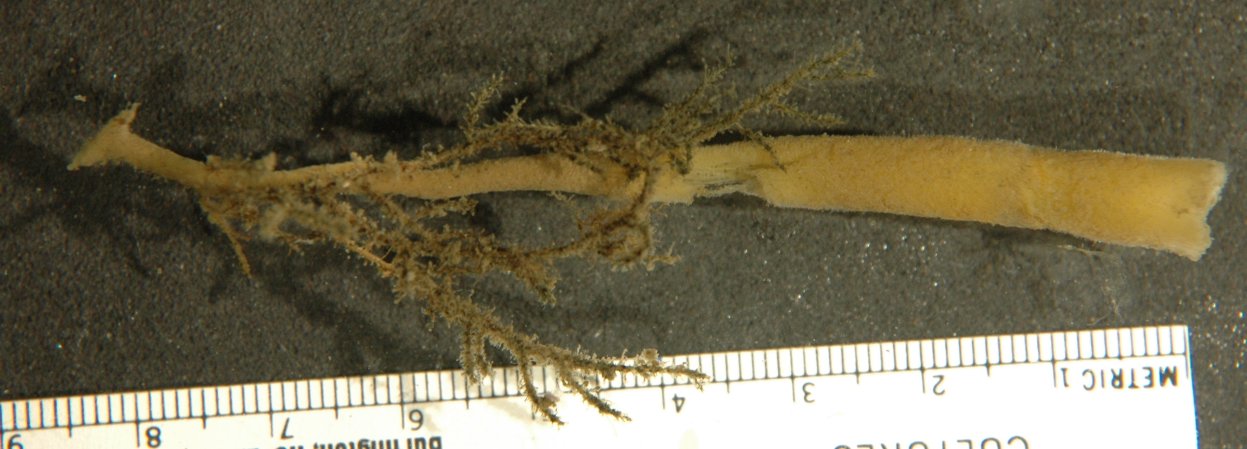Stylissa stipitata de Laubenfels, 1961Common name(s): Trumpet sponge |
|
| Synonyms: |  |
| Phylum
Porifera
Class Demospongiae Order Axinellida Family Axinellidae |
|
| Stylissa stipitata from about 10 m depth, Northwest Island, Rosario Bay, WA. The right (top) end is a large, open osculum. | |
| (Photo by: Dave Cowles, July 2006) | |
How to Distinguish from Similar Species: Phakettia close to beringensis has a rugose (rough) surface and may have larger styles. Mycale adhaerens may grow tall and fingerlike in shape but without the large osculum and atrium.
Geographical Range:
Depth Range: Subtidal
Habitat: Attached to rocks
Biology/Natural History: The nudibranch Archidoris odhneri feeds on Stylissa, as well as on other sponges.
| Return to: | |||
| Main Page | Alphabetic Index | Systematic Index | Glossary |
References:
Dichotomous Keys:Kozloff 1987, 1996
General References:
Scientific Articles:
Alvarez, Belinda, Crisp, MichaeL. D., Driver, Felice, Hooper,
John N.
A. & Van Soest, RoB. W. M., 2000. Phylogenetic
relationships
of the family Axinellidae (Porifera: Demospongiae) using morphological
and molecular data. Zoologica Scripta 29:22, pp. 169-198.
Erpenbeck, D.; Breeuwer, J. A. J.; Soest, R. W. M., 2005. Implications from a 28S rRNA gene fragment for the phylogenetic relationships of halichondrid sponges (Porifera: Demospongiae). Journal of Zoological Systematics & Evolutionary Research 43:2 pp. 93-99
Green, G., 1977. Ecology of toxicity in marine
sponges.
Marine Biology 40:3 pp. 207-215
Web sites:
General Notes and Observations: Locations, abundances, unusual behaviors:

A style (spicule) from Stylissa stipitata.
Photo by Brooke
Reiswig, July 2006
Authors and Editors of Page:
Dave Cowles (2006): Created original page